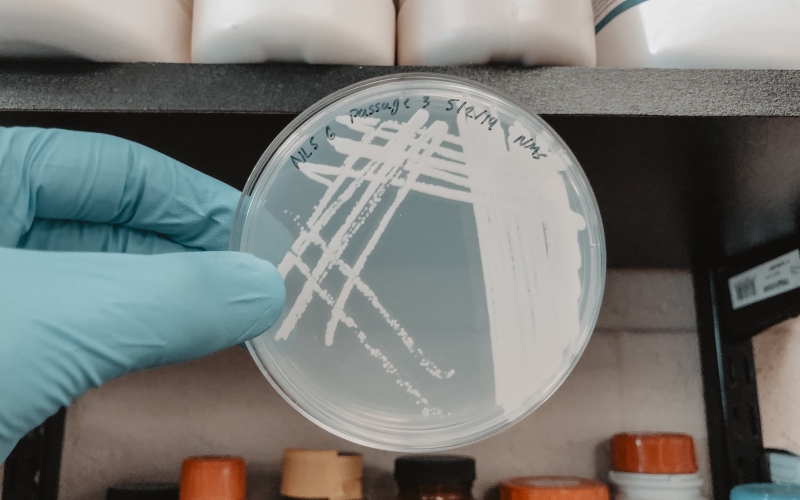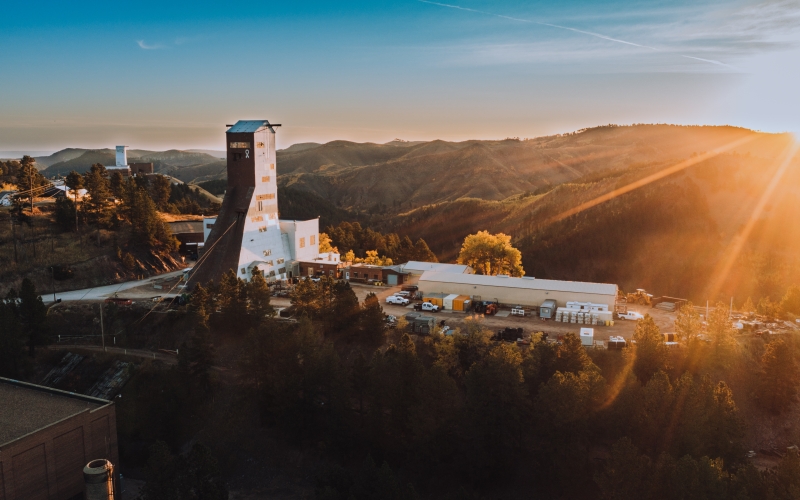
A group of students visited the Sanford Underground Research Facility (SURF) to collect biological samples for their research with the South Dakota Mines Research Experience for Undergraduates Program. Here, the group stands in front of the Kirk Canyon entrance to the 300 Level of SURF.
By the light of their headlamps, eight students stepped into a tunnel 300 feet below the surface of Sanford Underground Research Facility (SURF). The mission was an exploratory one: collect samples of everything that looks interesting.
While the walkway and ground support of the 300 Level is routinely maintained, the tunnel has exposed rock surfaces and is damp from natural water inflow. In these conditions, microbial communities thrive, and that’s what these fledgling researchers were counting on.
The students are taking part in Research Experience for Undergraduates (REU), a program funded by the National Science Foundation (NSF). This specific REU program, led by South Dakota Mines (Mines) and referred to as SURE (Summer Undergraduate Research Experiences), connects students from universities across the nation with Mines professors who mentor them in biology and environmental science research.
“SURF is proud to support REU programs,” said Jaret Heise, science director at SURF. “Not only are they a great way to introduce students from across the country to underground science at SURF, these initial experiences can launch their careers in science.”
Led by a SURF safety guide, the group trekked 400 yards to the end of the 300 Level, then turned back to scour the tunnel for signs of microbial life. The walk to the end had taken just 10 minutes. The walk back—as students shone their headlamps on every pipe, every puddle and every square inch of exposed rock, then stooped to scrape samples into collection tubes—took over an hour.
Although only one student, Paycen Harroun, needed samples from this area to inform his laboratory research, each student was enthusiastically involved.
“Have you sampled this area yet?”
“There’s something interesting growing on this pipe.”
“Look over here! This puddle has a blueish tint, and over there is a bit orange.”
The sampling effort ended only when Harroun ran out of collection tubes.
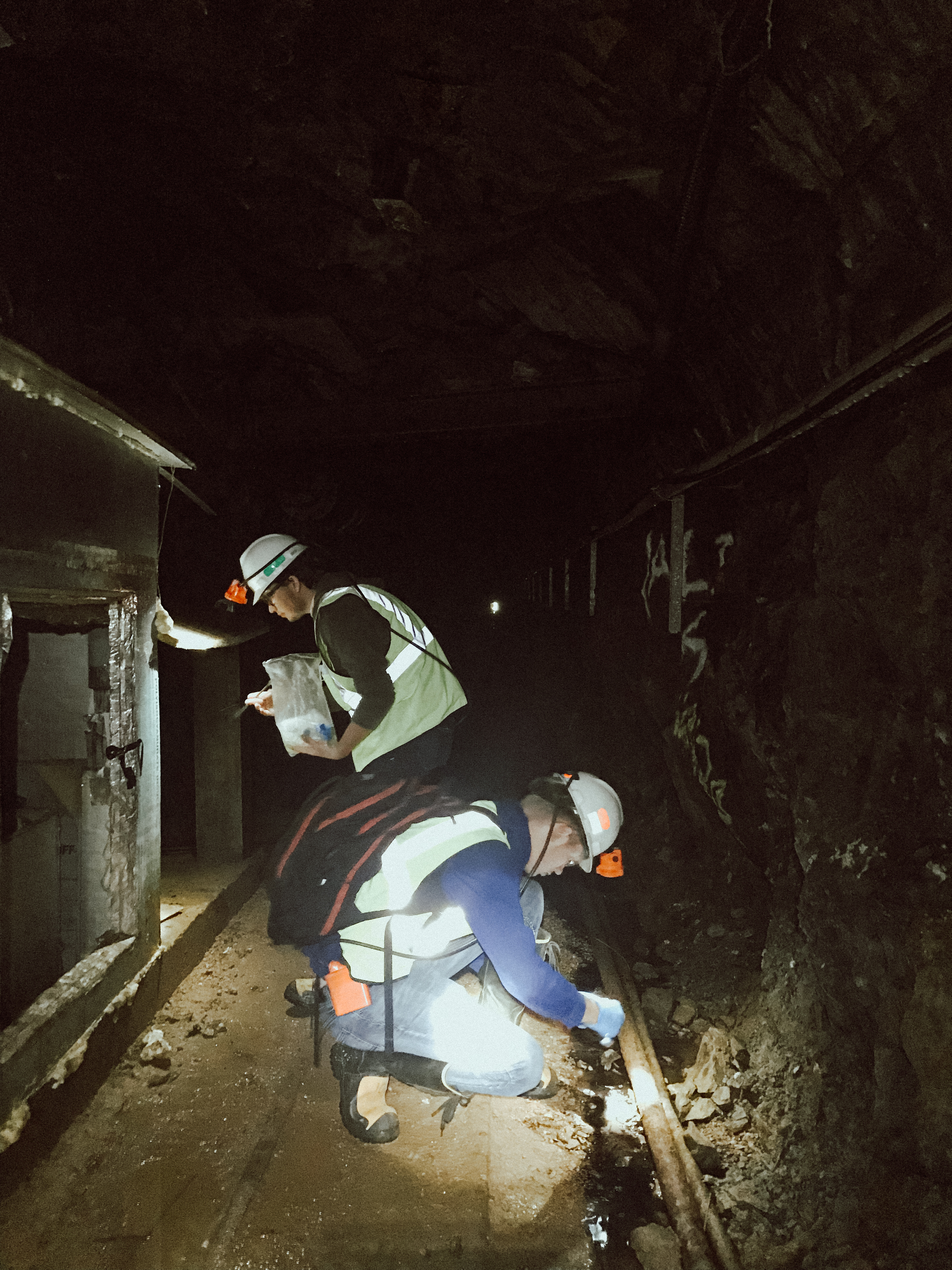
Back at the Mines laboratory, Harroun will extract the DNA from his samples and identify the organisms present. He hopes his samples will include a microbe that consumes methane and produces a biodegradable plastic. This unique organism has been found at SURF before.
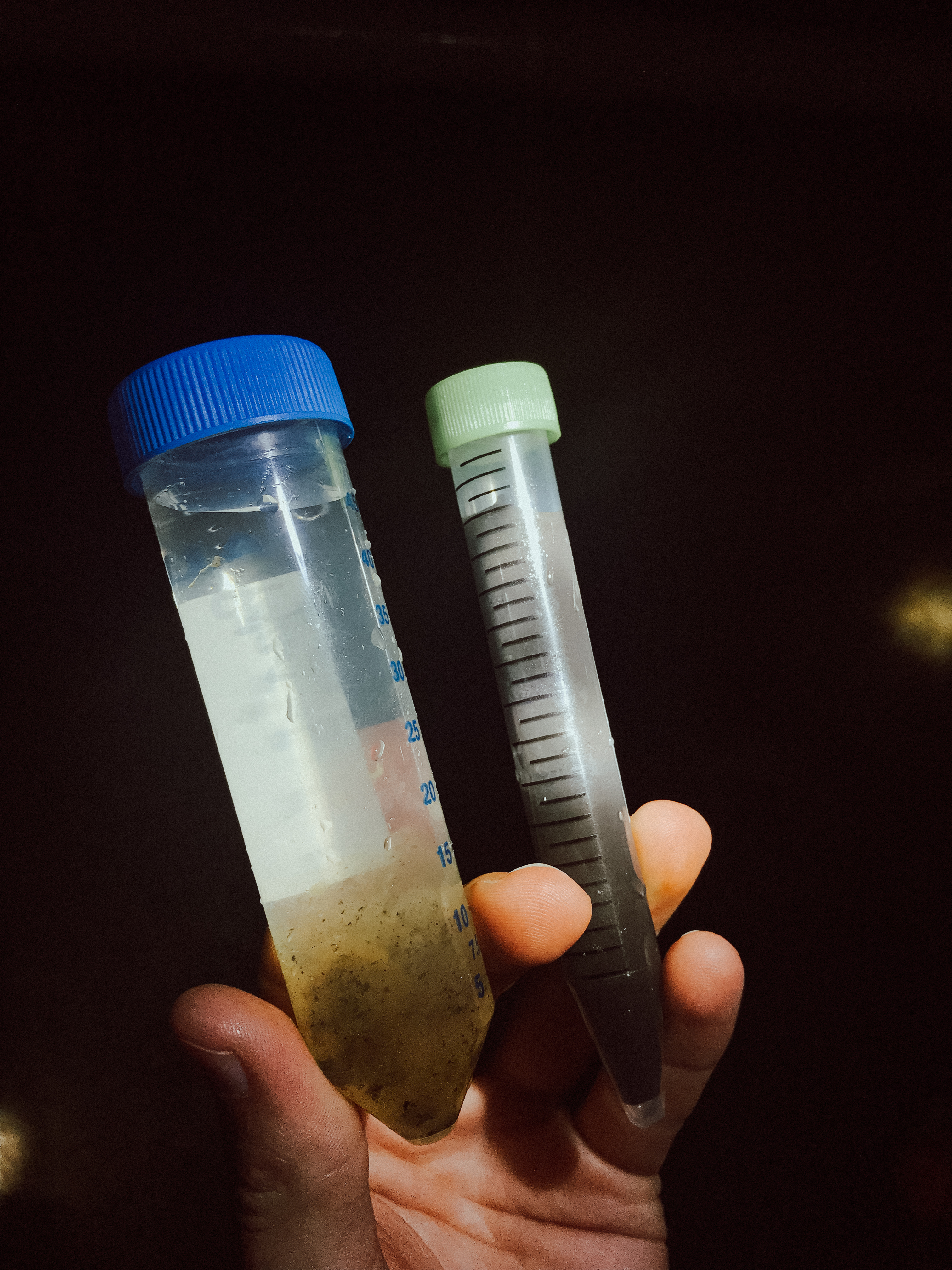
“Effectively, harnessing this organism’s abilities on a larger scale would mitigate two environmental problems at once,” Harroun explained. “Methane is 28 times more destructive to our biosphere than carbon dioxide, and these organisms consume it. And a biodegradable alternative to plastic would have amazing effects on our world, especially for marine environments.”
Harroun’s research contributes to a larger research effort at Mines, the BuG ReMeDEE project (Building Genome-to-Phenome Infrastructure for Regulating Methane in Deep and Extreme Environments), pronounced “bug remedy.” This collaborative group of researchers from three universities (Mines, Montana State University, and the University of Oklahoma) seeks to understand curious life forms called extremophiles—organisms that survive in adverse conditions like deep underground at SURF and in thermal pools in Yellowstone.
Through the Mines REU program, undergraduates get direct research experience with NSF funded projects like BuG ReMeDEE.
“As an undergraduate, I didn't have a ton of research experience,” said Harroun, a senior biology student at Mines. “The beginning of the program focused on building the skills and basic biology laboratory practices that I needed to understand to perform research. Now, that experience allows me to work with my samples in an effective way.”
Saurabh Dhiman is an REU program mentor and assistant professor of chemistry, biology and environmental engineering at Mines. According to Dhiman, REU students contribute necessary work to the BuG ReMeDEE program while learning about genome to phenome research, a topic at the forefront of the field.
“If we look into biology research all over the world, genome editing or genome-based research projects are at the core of new developments,” said Dhiman. “Genome editing is the future of biology and biology-based engineering and manufacturing.”
“The program was a great opportunity to access and take samples from an exclusive and unordinary environment," said Samuel Hass, a biomedical engineering undergraduate from South Dakota State University. "It was very eye opening to see the process that goes into research and made me eager to continue my studies.”
The NSF supports dozens of REU programs across the nation, providing students with stipends and assistance with housing and travel. Two annual REU programs, one at Mines and one at Black Hills State University (BHSU), are made possible by partnerships between South Dakota universities and SURF.
The REU program led by BHSU takes a multidisciplinary approach, exposing students to geology, biology, chemistry and physics disciplines at BHSU and at SURF. Brianna Mount, who directs the BHSU REU program, said the program gives student researchers opportunities to engage in research related to some of the most important physics experiments of our time—searching for dark matter and investigating properties of the neutrino. Mount added that REU students also participate in professional development workshops and cohort-building social activities each week.
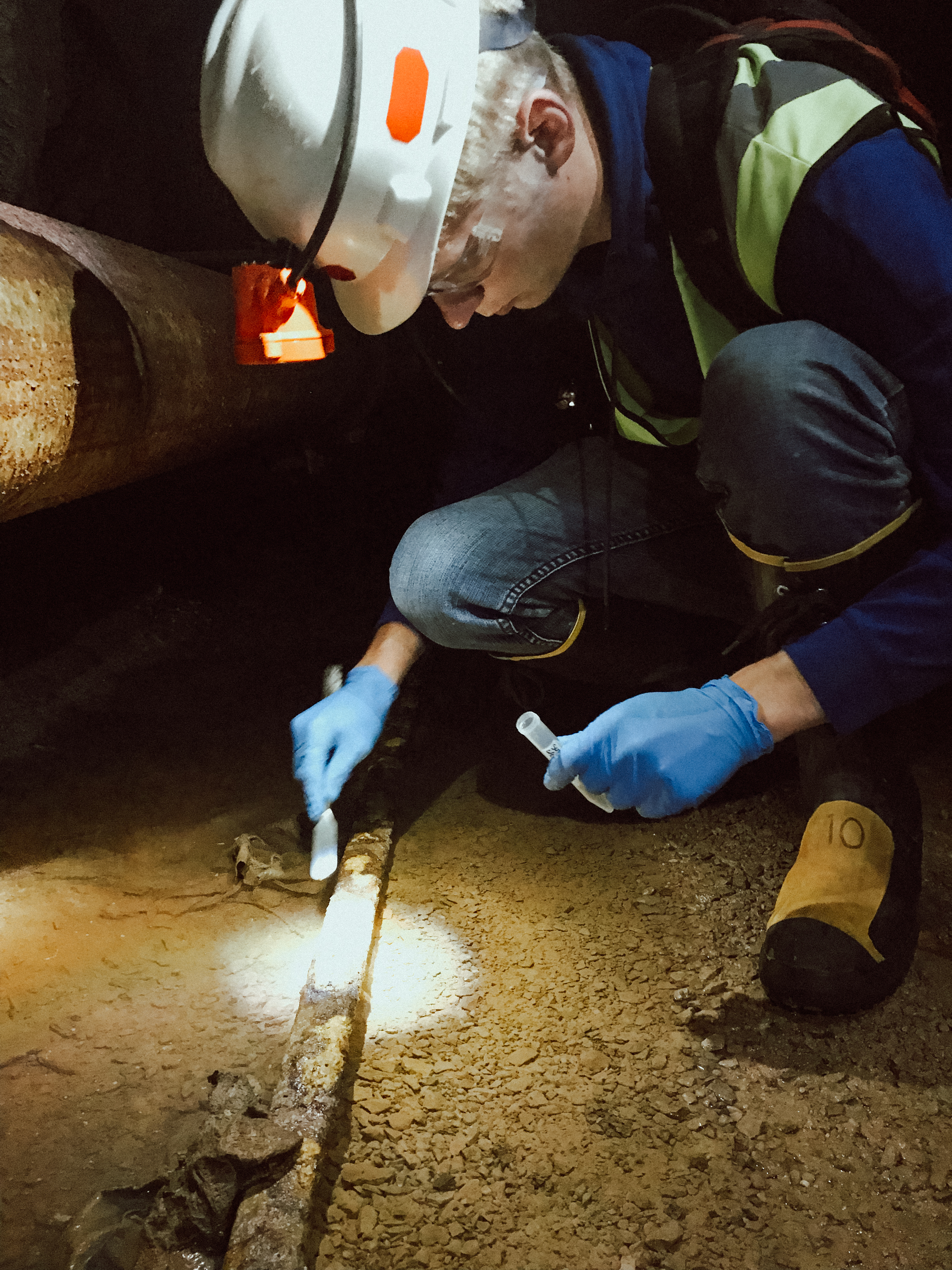
“I think this program was very rewarding and has taught me about a lot of procedures and practices I haven't gotten in typical lab settings,” said Rachel Engel, a chemical engineering student at Mines. Madisen Lindholm, who is studying atmospheric and environmental sciences at Mines, said, “Learning how to work as a researcher has been an amazing experience, and I have a high interest in working as a researcher as my career.”
“When somebody says they're doing research, that obviously sounds cool,” Harroun said. “But now, I know the process and the time it takes and kind of the commitment it takes to actually achieve something. It's been pretty eye opening.”
With REU, students don’t need to earn advanced degrees before contributing to exciting, vital scientific research. Learn more about Research Experiences for Undergraduates at Mines and BHSU, or visit NSF’s full catalogue of REU programs.
